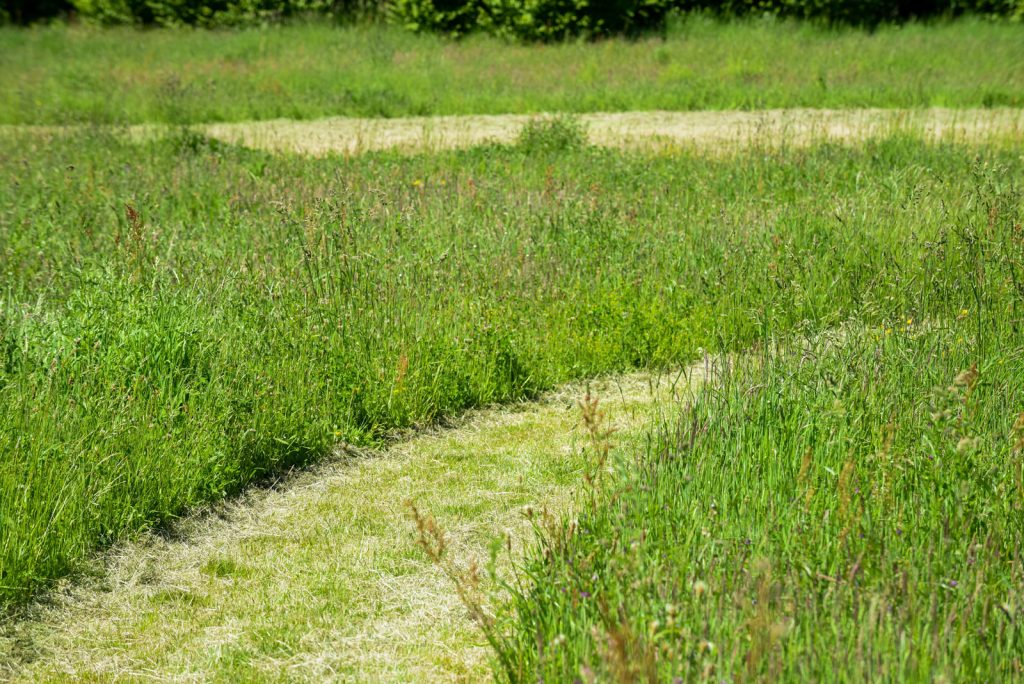Understanding USDA Mowing Regulations and How to Use Mowing as a Management Tool
Mowing is one of the most widely used techniques for establishing and managing vegetation in Conservation Reserve Program (CRP) fields, but it’s also one of the most misunderstood. While mowing can be an effective tool for weed control and habitat maintenance, it must be used strategically and in compliance with USDA regulations to avoid penalties and ensure the long-term success of your CRP project.
With over 400,000 acres of successful native grass establishment and management, FDCE helps landowners develop and execute compliant mowing strategies that support healthy, thriving conservation plantings.
Why Mowing Matters in CRP Fields
Weeds and unwanted vegetation pose significant threats to CRP projects, especially during the first few years of establishment. Invasive species can outcompete native grasses and forbs, hinder growth, and reduce the ecological value of the habitat. Mowing helps by:
- Reducing weed seed production
- Preventing shade by weed species
- Encouraging native species by reducing competition
- Preparing for interseeding or herbicide application
However, improper or untimely mowing can harm desired vegetation and disrupt wildlife habitats.
USDA Regulations on Mowing CRP Land
Mowing on CRP-enrolled land is not permitted for routine maintenance purposes, such as simply improving appearance or maintaining lawn-like conditions. The USDA’s Farm Service Agency (FSA) has strict rules to protect the environmental goals of the program.
Key USDA Guidelines Include:
- No mowing during the primary nesting season (dates vary by state, typically April 1 – August 1).
- Mowing for weed control must be:
- Authorized by FSA in advance
- Targeted and minimal, limited to specific infested areas
- Mowing as a Mid-Contract Management (MCM) activity must align with additional practices and the contract’s MCM schedule (often year 3–6).
Always consult your local USDA service center before mowing to ensure compliance.
When to Mow for Effective Weed Control
1. Establishment Year (Year 1)
During the first growing season, mowing is often necessary to control annual weeds and encourage native seedlings.
- Timing: Mow when weeds reach 18-24 inches tall.
- Height: Mow to about 8-12 inches, above emerging native grasses.
- Frequency: Up to 3 times during the growing season if needed and approved.
2. Years 2–3
After establishment, mowing may be needed for spot weed control, particularly for aggressive perennial species.
- Mow outside the nesting season unless spot mowing is approved for establishment or noxious/invasive species control.
- Combine mowing with herbicide application for best results in suppressing regrowth.
3. Mid-Contract Management Period (Years 3–6)
Mowing can be used as part of your USDA-required mid-contract activity.
- Typically paired with interseeding or herbicide spraying for habitat improvement.
- FDCE can execute a compliant MCM plan tailored to your site.
Best Practices for Mowing CRP Fields
To maximize the benefit of mowing and protect your CRP investment:
- Avoid scalping; mow high to preserve native seedlings.
- Sharpen blades to reduce plant damage and disease risk.
- Use mowing to prepare for herbicide treatments by removing vegetative cover.
- Keep records of mowing dates, purpose, and acreage for FSA documentation.
How FDCE Supports Mowing and Weed Management
At FDCE, we provide technical and chemical component assistance for CRP mid-contract management, including mowing, spraying, and interseeding. Our team understands regional requirements and helps landowners:
- Stay in compliance with USDA mowing regulations
- Control invasive weeds effectively
- Develop and execute a long-term vegetation management plan
With over 400,000 acres of hands-on experience, FDCE is your trusted partner for managing CRP land the right way, starting with the mower.
Ready to Manage Your CRP Land Strategically?
Whether you’re in the early stages of establishment or preparing for mid-contract maintenance, FDCE can help you use mowing as an effective, compliant weed control tool. Contact us today to build a custom management plan for your CRP project.

